Who to screen
Screening can identify at-risk patients and, along with staging and monitoring, can help you determine if you can intervene with TZIELD.


AUTOIMMUNE T1D
A chronic disease growing in prevalence in the US
~2M
living
with T1D1,2
~90%
of T1D cases occur in those without a family history3
~64K
diagnosed
each year4
~10%
projected relative
growth by 20335*
*Projected increase from 2024, assuming population growth, increasing T1D incidence (based on the Global Burden of Disease Study 2017), and improved survival with use of devices.4
AT RISK FOR AUTOIMMUNE T1D
Proactive screening can identify patients at risk of having T1D
Up to 62% of newly diagnosed patients with clinical T1D without prior screening had DKA at diagnosis.6

Meet Jack
Adults with first-degree relatives who have T1D are 15x more likely to develop T1D.7
- 25 years old
- Routine annual physicals
- His 54-year-old mother has T1D
FACT: ~60% of new T1D cases were in those over 20 years of age.8

Meet Katie
Children with first-degree relatives who have T1D are 15x more likely to develop T1D.7
- 10 years old
- No visible health concerns
- Her brother has T1D
FACT: An autoimmune T1D diagnosis before age 10 may shorten life expectancy by up to 17 years.9

Meet Theresa
17%-30% of patients with T1D also have an autoimmune thyroid disease.10
- 49 years old
- On hormone therapy for Hashimoto’s diseases
FACT: Those with Hashimoto’s and Graves’ disease are at 2-3x increased risk of T1D.11

Meet Rob
Proactive screening identifies when abnormal glucose could be due to T1D rather than T2D.
-
- 45 years old
- BMI: 27kg/m2
- Current HbA1c: 6.0%
- FPG: 120 mg/dL
FACT: 40% of adults >30 years old with T1D are initially diagnosed with T2D.12,13
Abnormal glucose levels could be related to an autoimmune attack (type 1) rather than insulin resistance (type 2)
Age and BMI may be unreliable diagnosis criteria.8
Among patients with T1D:
- 62% diagnosed over the age of 20*†
- 62% BMI ≥25 kg/m2
These findings challenge misconceptions of T1D as a juvenile disease and higher BMI solely being T2D related.14,15
*Median age 24 years.
†Data from 2016-2021.
BMI=body mass index; FPG=fasting plasma glucose; HbA1c=hemoglobin A1c; T2D=type 2 diabetes.
Why screen
Identify T1D at early, presymptomatic stages by screening at-risk individuals for at least 4 autoantibodies (AAbs), as recommended by the American Diabetes Association (ADA).13,16
Learn about the importance of screening, the impacts of DKA, and the other burdens of T1D.
Age of diagnosis
While peak age of T1D diagnosis occurs in adolescence, T1D can occur at any age.8,17


Distribution of age at diagnosis in US adults with T1D (n=947), National Health Interview Survey (NHIS), 2016 to 2022. Adapted from Fang M, et al. Ann Intern Med. 2023;176(11):1567-1568.


Distribution of age at diagnosis in US adults with T1D (n=947), National Health Interview Survey (NHIS), 2016 to 2022. Adapted from Fang M, et al. Ann Intern Med. 2023;176(11):1567-1568.
Your patients have multiple screening options
Important Safety Information Anchor
INDICATION
TZIELD is a CD3-directed monoclonal antibody indicated to delay the onset of Stage 3 type 1 diabetes (T1D) in adults and pediatric patients aged 8 years and older with Stage 2 T1D.
IMPORTANT SAFETY INFORMATION
WARNINGS AND PRECAUTIONS
- Cytokine Release Syndrome (CRS): CRS occurred in TZIELD-treated patients during the treatment period and through 28 days after the last drug administration. Prior to TZIELD treatment, premedicate with antipyretics, antihistamines and/or antiemetics, and treat similarly if symptoms occur during treatment. If severe CRS develops, consider pausing dosing for 1 day to 2 days and administering the remaining doses to complete the full 14-day course on consecutive days; or discontinue treatment. Monitor liver enzymes during treatment. Discontinue TZIELD treatment in patients who develop elevated alanine aminotransferase or aspartate aminotransferase more than 5 times the upper limit of normal (ULN) or bilirubin more than 3 times ULN.
- Serious Infections: Use of TZIELD is not recommended in patients with active serious infection or chronic infection other than localized skin infections. Monitor patients for signs and symptoms of infection during and after TZIELD administration. If serious infection develops, treat appropriately, and discontinue TZIELD.
- Lymphopenia: Lymphopenia occurred in most TZIELD-treated patients. For most patients, lymphocyte levels began to recover after the fifth day of treatment and returned to pretreatment values within two weeks after treatment completion and without dose interruption. Monitor white blood cell counts during the treatment period. If prolonged severe lymphopenia develops (<500 cells per mcL lasting 1 week or longer), discontinue TZIELD.
- Hypersensitivity Reactions: Acute hypersensitivity reactions including serum sickness, angioedema, urticaria, rash, vomiting and bronchospasm occurred in TZIELD-treated patients. If severe hypersensitivity reactions occur, discontinue TZIELD and treat promptly.
- Vaccinations: The safety of immunization with live-attenuated (live) vaccines with TZIELD-treated patients has not been studied. TZIELD may interfere with immune response to vaccination and decrease vaccine efficacy. Administer all age-appropriate vaccinations prior to starting TZIELD.
- Administer live vaccines at least 8 weeks prior to treatment. Live vaccines are not recommended during treatment, or up to 52 weeks after treatment.
- Administer inactivated (killed) vaccines or mRNA vaccines at least 2 weeks prior to treatment. Inactivated vaccines are not recommended during treatment or 6 weeks after completion of treatment.
ADVERSE REACTIONS
Most common adverse reactions (>10%) were lymphopenia, rash, leukopenia, and headache.
USE IN SPECIFIC POPULATIONS
- Pregnancy: May cause fetal harm.
- Lactation: A lactating woman may consider pumping and discarding breast milk during and for 20 days after TZIELD administration.
Please see full Prescribing Information, including patient selection criteria, and Medication Guide. View Important Safety Information page.
REFERENCES
- Insel RA, Dunne JL, Atkinson MA, et al. Staging presymptomatic type 1 diabetes: A scientific statement of JDRF, the Endocrine Society, and the American Diabetes Association. Diabetes Care. 2015;38(10):1964-1974.
- Centers for Disease Control and Prevention. National diabetes statistics report. Accessed July 17, 2024. https://www.cdc.gov/diabetes/php/data-research/index.html
- Steck AK, Rewers MJ. Genetics of type 1 diabetes. Clin Chem. 2011;57(2):176-185.
- Rogers M, Kim C, Banerjee T, et al. Fluctuations in the incidence of type 1 diabetes in the United States from 2001 to 2015: a longitudinal study. BMC Med. 2017;15(1):199.
- Smith RA, Eisenberg S, Turner-Pfifer A, et al. We are on the verge of breakthrough cures for type 1 diabetes, but who are the 2 million Americans who have it? J Health Econ Outcomes Res. 2024;11(2):145-153.
- Beliard K, Ebekozien O, Demeterco-Berggren C, et al. Increased DKA at presentation among newly diagnosed type 1 diabetes patients with or without COVID-19: Data from a multi-site surveillance registry. J Diabetes. 2021;13(3):270-272.
- Couper JJ, Haller MJ, Greenbaum CJ, et al. ISPAD Clinical Practice Consensus Guidelines 2018: Stages of type 1 diabetes in children and adolescents. Pediatr Diabetes. 2018;19(suppl 27):20-27.
- Fang M, Wang D, Echouffo-Tcheugui JB, Selvin E. Age at diagnosis in U.S. adults with type 1 diabetes. Ann Intern Med. 2023;176(11):1567-1568.
- Rawshani A, Sattar N, Franzén S, et al. Excess mortality and cardiovascular disease in young adults with type 1 diabetes in relation to age at onset: A nationwide, register-based cohort study. Lancet. 2018;392(10146):477-498.
- Popoviciu MS, Kaka N, Sethi Y, et al. Type 1 diabetes mellitus and autoimmune diseases: A critical review of the association and the application of personalized medicine. J Pers Med. 2023;13(3):422.
- Edelman S, Agardh D, Cui N, et al. Risk of developing type 1 diabetes in individuals with other autoimmune conditions. Abstract presented at: 60th EASD Annual Meeting of the European Association for the Study of Diabetes; September 9-13, 2024; Madrid, Spain. Session OP 19, Abstract 114.
- Holt RIG, DeVries JH, Hess-Fischl A, et al. The management of type 1 diabetes in adults. A consensus report by the American Diabetes Association (ADA) and the European Association for the Study of Diabetes (EASD). Diabetologia. 2021;64(12):2609-2652.
- American Diabetes Association Professional Practice Committee. Diagnosis and classification of diabetes: standards of care in diabetes—2025. Diabetes Care. 2025;(48)(Suppl 1):S27-S49.
- Diaz-Valencia PA, Bougnères P, Valleron AJ. Global epidemiology of type 1 diabetes in young adults and adults: a systematic review. BMC Public Health. 2015;15:255.
- Van der Schueren B, Ellis D, Faradji RN, Al-Ozairi E, Rosen J, Mathieu C. Obesity in people living with type 1 diabetes. Lancet Diabetes Endocrinol. 2021;9(11):776-785.
- TZIELD Prescribing Information. Provention Bio, Inc; 2023.
- Hormazábal-Aguayo I, Ezzatvar Y, Huerta-Uribe N, Ramirez-Velez R, Izquierdo M, Garcia-Hermoso A. Incidence of type 1 diabetes mellitus in children and adolescents under 20 years of age across 55 countries from 2000 to 2022: A systematic review with meta-analysis. Diabetes Metab Res Rev. 2024;40(3):e3749.
INDICATION
IMPORTANT SAFETY INFORMATION
INDICATION
TZIELD is a CD3-directed monoclonal antibody indicated to delay the onset of Stage 3 type 1 diabetes (T1D) in adults and pediatric patients aged 8 years and older with Stage 2 T1D.
IMPORTANT SAFETY INFORMATION
WARNINGS AND PRECAUTIONS
- Cytokine Release Syndrome (CRS): CRS occurred in TZIELD-treated patients during the treatment period and through 28 days after the last drug administration. Prior to TZIELD treatment, premedicate with antipyretics, antihistamines and/or antiemetics, and treat similarly if symptoms occur during treatment. If severe CRS develops, consider pausing dosing for 1 day to 2 days and administering the remaining doses to complete the full 14-day course on consecutive days; or discontinue treatment. Monitor liver enzymes during treatment. Discontinue TZIELD treatment in patients who develop elevated alanine aminotransferase or aspartate aminotransferase more than 5 times the upper limit of normal (ULN) or bilirubin more than 3 times ULN.
- Serious Infections: Use of TZIELD is not recommended in patients with active serious infection or chronic infection other than localized skin infections. Monitor patients for signs and symptoms of infection during and after TZIELD administration. If serious infection develops, treat appropriately, and discontinue TZIELD.
- Lymphopenia: Lymphopenia occurred in most TZIELD-treated patients. For most patients, lymphocyte levels began to recover after the fifth day of treatment and returned to pretreatment values within two weeks after treatment completion and without dose interruption. Monitor white blood cell counts during the treatment period. If prolonged severe lymphopenia develops (<500 cells per mcL lasting 1 week or longer), discontinue TZIELD.
- Hypersensitivity Reactions: Acute hypersensitivity reactions including serum sickness, angioedema, urticaria, rash, vomiting and bronchospasm occurred in TZIELD-treated patients. If severe hypersensitivity reactions occur, discontinue TZIELD and treat promptly.
- Vaccinations: The safety of immunization with live-attenuated (live) vaccines with TZIELD-treated patients has not been studied. TZIELD may interfere with immune response to vaccination and decrease vaccine efficacy. Administer all age-appropriate vaccinations prior to starting TZIELD.
- Administer live vaccines at least 8 weeks prior to treatment. Live vaccines are not recommended during treatment, or up to 52 weeks after treatment.
- Administer inactivated (killed) vaccines or mRNA vaccines at least 2 weeks prior to treatment. Inactivated vaccines are not recommended during treatment or 6 weeks after completion of treatment.
ADVERSE REACTIONS
Most common adverse reactions (>10%) were lymphopenia, rash, leukopenia, and headache.
USE IN SPECIFIC POPULATIONS
- Pregnancy: May cause fetal harm.
- Lactation: A lactating woman may consider pumping and discarding breast milk during and for 20 days after TZIELD administration.
Please see full Prescribing Information, including patient selection criteria, and Medication Guide. View Important Safety Information page.

